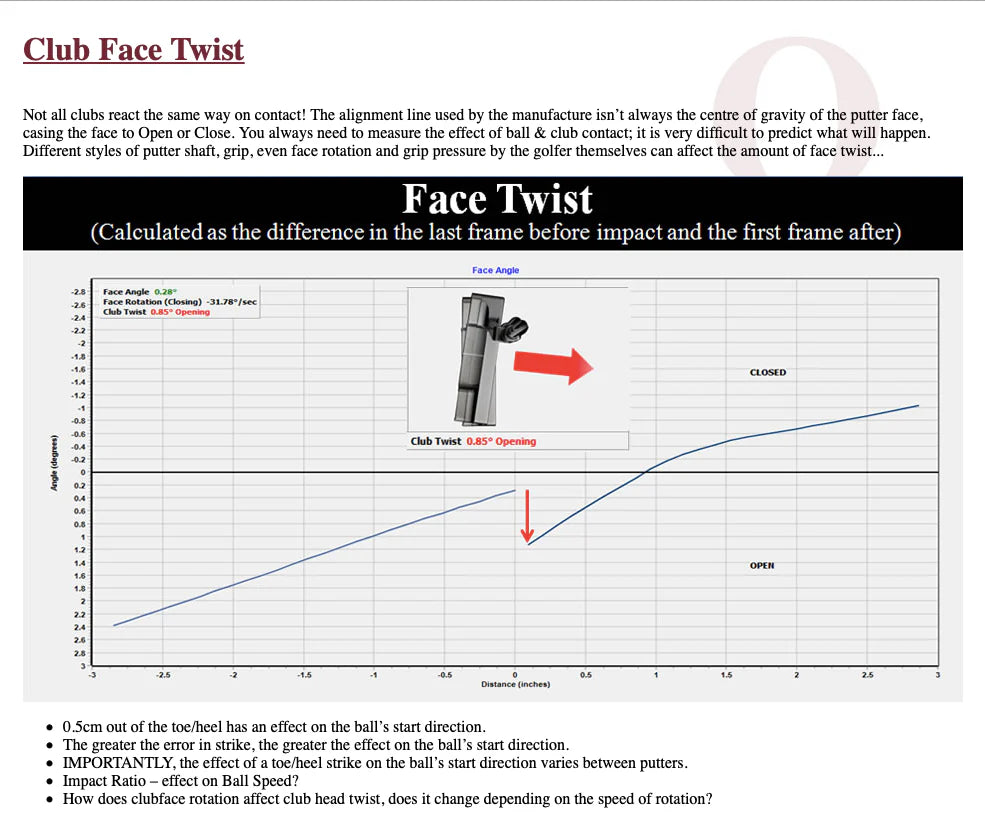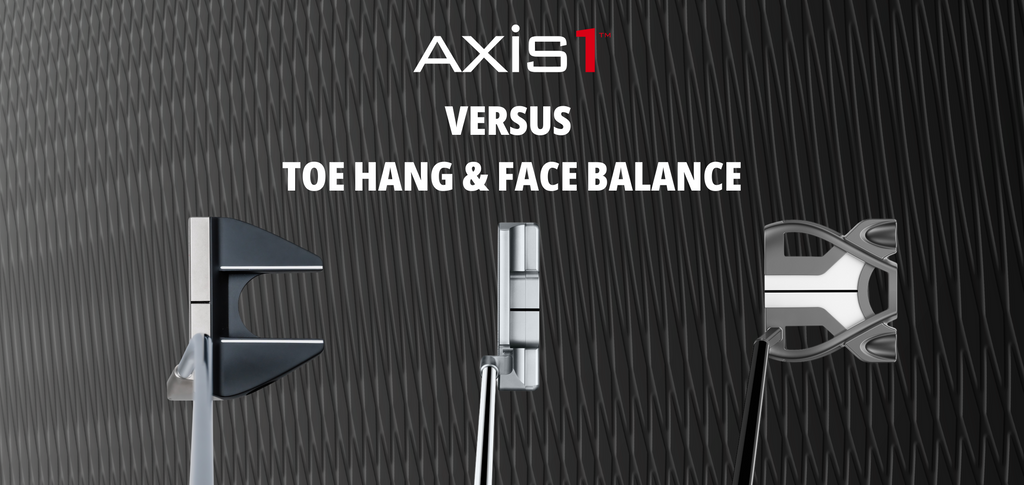
Why CG Placement On a Putter Matters
Axis1 is the only company in golf to own the patents to put the Center of Gravity on the center of the striking face and in-line with the Axis of the shaft. Why does this matter and how do you determine where the true point of “zero-twist” is on all golf putters?
Having been in the industry for over two decades, I’ve seen all of the “marketing hype” but rarely do I see any independent data to back up a lot of the claims companies make. It’s important for consumers to understand the difference between “telling” and “showing”. Using independently sourced information, allow us to show you instead of just tell you.
What is Face Twist? Face Deflection as a Result of Impact
According to Quintic Ball Roll, “Not all clubs react the same way on CONTACT! The alignment line used by the manufacture isn’t always the center of gravity of the putter face causing the face to open or close.”

Source: https://www.quinticballroll.com/Quintic_Ball_Roll_Toe_Heel_Strike.html
Now For the Findings...
Where is the Axis1 point of twist?
Here is the data using Alistair Davies, the Axis1 Putter Review and Robotic Test: “What we found is when the ball is hit where the line is on the putter there’s basically zero-twist. So, basically, the Center of Gravity or point of zero-twist is where the line is on the (Axis1) putters. A lot of heel-shafted putters point of zero twist is generally towards the heel.”
As you see in the Quintic chart below on the bottom right, the blue line represents 0* twist at impact. Using the Quintic color-coding the Blue line below represents “tour like performance”. You will also notice in the bottom left of the image that the face angle at impact is also blue and perfectly square. This one hundred percent backs up our claim of Axis1 putters being “perfectly balanced and torque-free.”

Where is the point of Zero-Twist on a putter with Toe-Hang?
According to Alistair Davies: “So, the first thing we looked at was hitting the putter on the center or what we perceive as the center where the white line is. What we noticed was in this instance the face actually twisted on impact which would lead us to believe that the center of gravity of the putter isn’t where the white line is.”.
As you see in the Quintic chart below, on the bottom right, the orange line represents .30* of twist at impact. So, what does orange mean in Quintic’s color-coding? “Caution”. So, the findings here illustrate when a putter with toe-hang was struck at impact using a robot, and measured by Quintic, the face of the putter TWISTED .30* OPEN at impact.

What Does This All Mean?
- Axis1 Putters point of zero twist is exactly where the line is on the putter.
- Toe hang putters’ point of zero twist is not where the line is on the putter and error towards the heel side of the striking face.
Here are the questions you should ask yourself before buying a putter.
- Would I rather use a putter that twists -or- doesn’t twist on center strikes?
- Would I rather use a putter that shows a face returning to square at impact or would I rather depend on “timing” to get your putter back to square at impact?
- Even if I have perfect timing every time, which not even PGA Tour Players have, and can deliver the putter back to square at impact, will I have consistent launch direction off the face when my putter either twists open or closed at impact?
Choose Axis1 For Torque-Free, Perfectly Balanced Putters
The proof is really in the pudding. Instead of trying to sway you with marketing hype, we thought cold hard facts would work much better. In short, don’t be fooled by “claims”. Instead, look at the science. Axis1 creates perfectly balanced, torque-free golf putters. Peruse our selection and discover the Axis1 difference for yourself.

